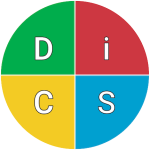Optimizing Team Building Through Reverse Mentoring:
Bridging Knowledge Gaps Across Generations
In today’s rapidly evolving workplace, where multiple generations coexist, it is crucial to find innovative ways to bridge the knowledge gaps and foster effective team collaboration. One such method gaining popularity is reverse mentoring. In this article, I will explore the concept of reverse mentoring, its benefits, and how it can optimize team building, leadership, and knowledge transfer within organizations.
Understanding Reverse Mentoring
Reverse mentoring is a unique approach where younger employees are paired with more experienced individuals to exchange knowledge, insights, and perspectives. Unlike traditional mentoring, this method allows junior employees to take on the role of mentors, sharing their expertise in areas such as technology, social media, and emerging trends.
By reversing the traditional mentor-mentee dynamic, reverse mentoring enables organizations to tap into the fresh perspectives and technological prowess of younger employees, while also addressing the knowledge gaps faced by the older generation. This reciprocal learning relationship promotes collaboration, understanding, and growth across generations.
Benefits of Reverse Mentoring
- Bridging the Generational Divide: Reverse mentoring provides an opportunity for different generations to understand and appreciate each other’s strengths and perspectives. It fosters empathy, collaboration, and mutual respect, breaking down barriers and creating a more inclusive work environment.
- Knowledge Transfer: With reverse mentoring, organizations can leverage the expertise of younger employees to bridge the gaps in technological know-how among senior staff. This knowledge transfer helps older employees stay up-to-date with the latest tools, platforms, and trends, enhancing their overall productivity and adaptability.
- Professional Development: Reverse mentoring offers junior employees a chance to develop leadership and communication skills as they take on the role of mentors. This experience enhances their confidence, promotes career advancement, and fosters a sense of ownership within the organization.
- Enhanced Team Building: By encouraging cross-generational collaboration, reverse mentoring strengthens team dynamics and promotes a culture of continuous learning. The exchange of ideas and perspectives leads to increased innovation, creativity, and problem-solving capabilities within the team.

Implementing Reverse Mentoring for Effective Team Building
- Identify Knowledge Gaps: Conduct a thorough assessment of the organization’s knowledge gaps, particularly in areas such as technology, social media, and emerging trends. This analysis will help identify the specific expertise that younger employees can offer.
- Establish Clear Objectives: Define the goals and expected outcomes of the reverse mentoring program. This will ensure alignment with the organization’s overall team building and knowledge transfer strategies.
- Create Mentor-Mentee Pairings: Match experienced employees with younger, tech-savvy individuals based on their areas of expertise and shared interests. Encourage open communication and collaboration between pairs to facilitate a productive learning environment.
- Set Regular Check-Ins: Establish a schedule for mentor-mentee check-ins to monitor progress, address challenges, and provide support. These sessions can take the form of formal meetings or informal discussions, depending on the preferences of the participants.
- Encourage Knowledge Sharing: Create platforms or spaces where mentors and mentees can share their experiences, insights, and resources with the larger team. This could include presentations, workshops, or online forums to encourage cross-pollination of knowledge.
- Recognize and Reward Success: Acknowledge the achievements and contributions of both mentors and mentees within the organization. Celebrate milestones, share success stories, and provide opportunities for recognition to encourage active participation and engagement.
Reverse mentoring offers a powerful tool for optimizing team building and bridging the knowledge gaps that exist across generations in the workplace. By harnessing the expertise of younger employees and promoting reciprocal learning, organizations can create a culture of collaboration, innovation, and continuous growth.
Through this article, I have explored the concept of reverse mentoring, its benefits, and practical steps for implementation. By embracing reverse mentoring, organizations can unlock the full potential of their diverse workforce and ensure a brighter future for all.
Remember, effective team building is not about age or experience alone, but rather about harnessing the collective wisdom and strengths of all team members. Embrace the power of reverse mentoring and watch your teams thrive in today’s multi-generational workplace.
![]() Follow Melanie Needham on LinkedIn
Follow Melanie Needham on LinkedIn
Related Links:
Managing Different Generations in The Workplace Read More Articles on MRD News Blog





